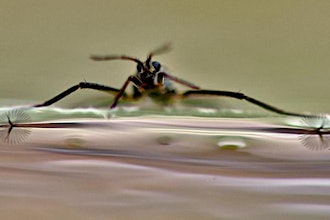
An IDTechEx Research report on Agricultural Robots and Drones finds this market currently valued at $3 billion, and it is projected to reach $10 billion as early as 2022.
The report analyses how robotic technology developments will:
- Change the business of agriculture, enabling ultra-precision farming.
- Help address key global challenges.
- Change the way farming is done and transform its value chain.
- Become the future of the agro-chemicals business.
- Modify the way agricultural machinery is designed.
Some more specific data points include:
- Dairy Farms: Thousands of robotic milking parlors have already been installed worldwide, creating a $1.9 billion industry that is projected to grow to $8.5 billion by 2026. Mobile robots are already penetrating dairy farms, helping automate tasks such as feeding and manure cleaning.
- Autonomous Tractors: Tractor guidance and auto-steering technologies are going mainstream thanks to improvements and cost reductions in RTK GPS technology. More than 300,000 tractors equipped with auto-steering or tractor guidance will be sold in 2016, rising to more than 660k units per year by 2026. Delays surrounding unmanned autonomous tractors have been largely delayed not by technical issues but by regulation, high sensor costs and a lack of farmer trust. IDTechEx feels this will change by 2022, with sales of unmanned tractors reaching $200 million by 2026.
- Agricultural drones: Unmanned remote-controlled helicopters have been spraying rice fields in Japan since the early 1990s. Autonomous drones have also been providing detailed aerial maps of farms, enabling farmers to take data-driven site-specific action. According to the report, this development will soon enter its boom years as regulatory barriers lower and the precision farming ecosystems come together. Agricultural drones are projected to be a $485 million market by 2026.
- Robotic weeding implements: Vision-enabled robotic implements have been in commercial use for some years in organic farming. These implements follow the crop rows, identify the weeds, and aid with mechanical hoeing. The next generation of these advanced robotic implements is also in its early phase of commercial deployment, but could become a $380 million market by 2026.
- Unmanned autonomous robotic weeders and data scouts: Vision-enabled and intelligence robots are advancing towards navigational autonomy. These small, slow and light robots will be autonomously roaming the farms, analyzing plants and taking specific actions like eliminating weeds. While most products are in prototype or semi-commercial trail phase, the first notable sales have also taken place - aimed at small multi-crop vegetable farmers. This is projected to become a $300 million market by 2026.
- Fresh fruit harvesting: Despite non-fresh fruit harvesting being largely mechanized, fresh fruit picking has remained out of the reach of machines or robots. Progress has been hampered by the stringent technical requirements and the fragmented nature of the market putting off investment. This is slowly changing. A limited number of fresh strawberry harvesters are already being tried, while fresh apple and citrus harvesters have also reached late stage prototyping. Market adoption will start from 2021 onwards, possibly reaching $230 million by 2026.
More information on the report is available here.






















